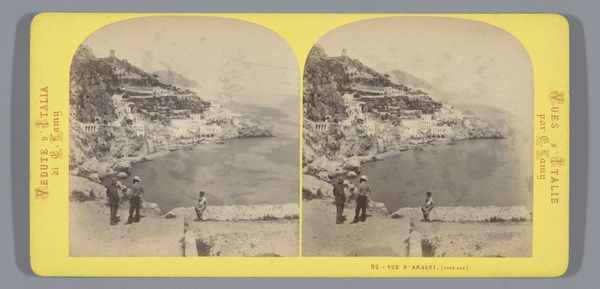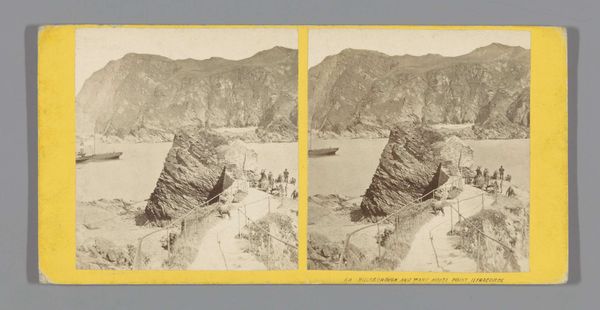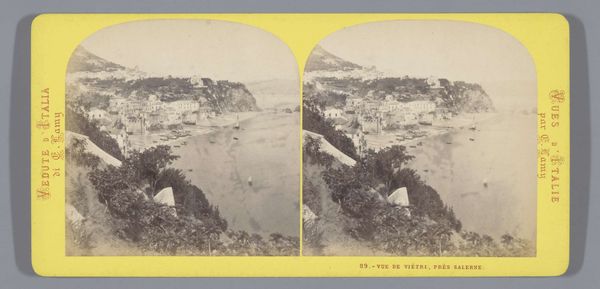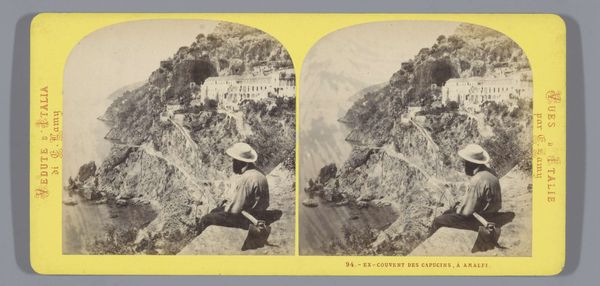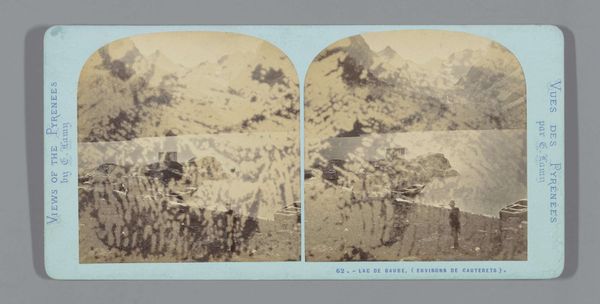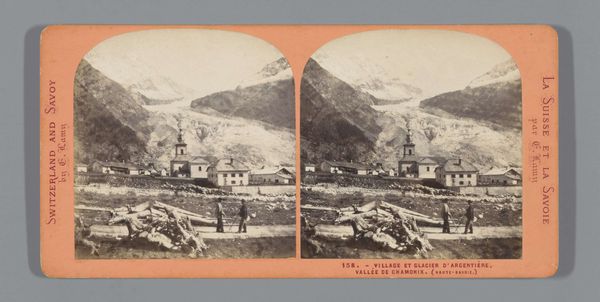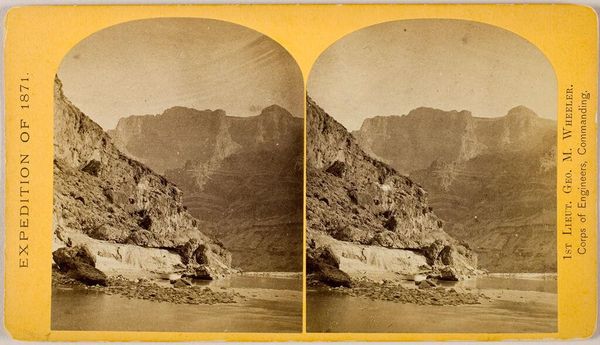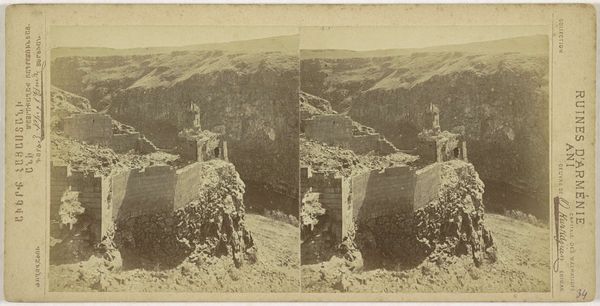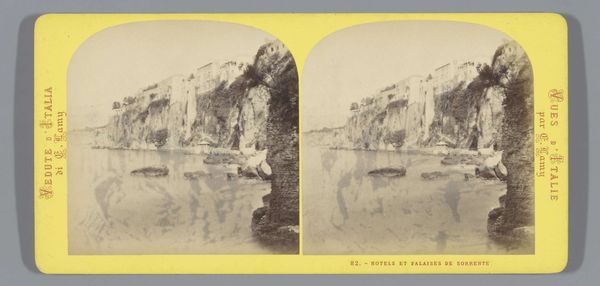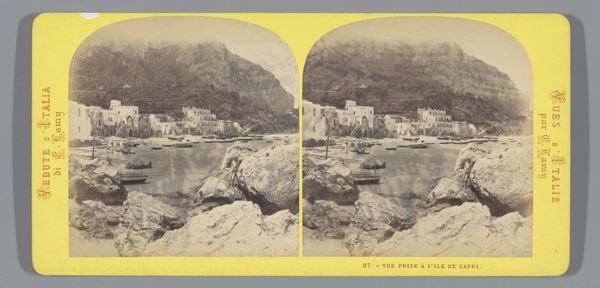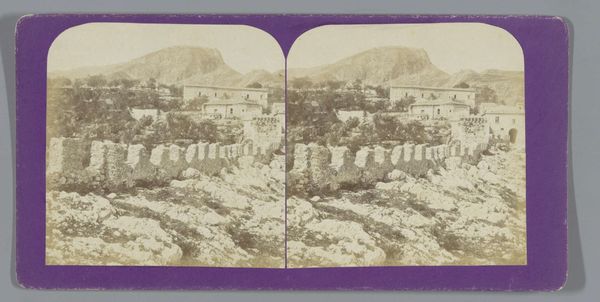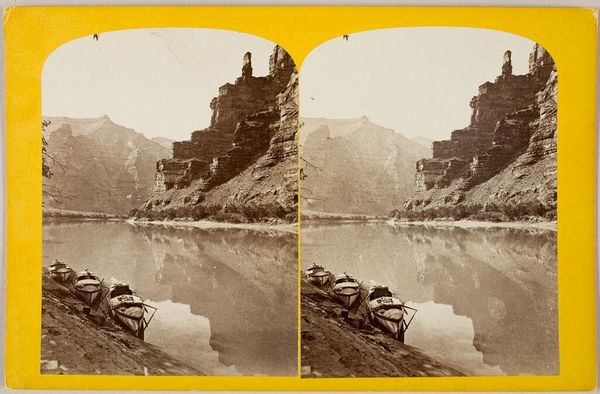
print, photography
# print
#
landscape
#
photography
#
cityscape
#
realism
Dimensions: height 87 mm, width 178 mm
Copyright: Rijks Museum: Open Domain
Curator: Before us, we have a work titled "Gezicht op Atrani" created sometime between 1861 and 1878 by Ernest Eléonor Pierre Lamy, a print rendered from photography. Editor: It has such a desolate beauty. The somber tone almost romanticizes this figure, this lone street cleaner; yet, there’s a prevailing mood of the ordinary…even a commentary about class, the one doing the unseen labor. Curator: Precisely. It's important to consider Atrani itself – a coastal town layered in history and culture. I'm particularly drawn to how Lamy frames this everyday labor against the backdrop of those layered buildings clinging to the hillside, buildings almost carved directly into the rockface. Editor: The stark juxtaposition. This individual at the foreground performing essential but invisible work in this Italian picturesque landscape almost feels like he’s being framed into being overlooked, while also actively shaping this stage we look at. There’s definitely a sense of intersection of class, labour and social mobility in this print. Curator: Indeed, photography in this era aimed to capture “reality” objectively. I think what draws us to such images today is that the artist inadvertently documented the cultural currents of his time – in this instance, how rapid development may or may not leave traces on individuals in the Italian landscape. Editor: Right, the sweeping view also emphasizes scale, emphasizing individual inconsequentiality in such expansive, timeless landscape. Even that the medium here is photographic printing gives it a mechanical feel, and it also reinforces how these records were accessible commodities. Curator: Perhaps we can reflect on what "Gezicht op Atrani" means to us: both a relic of its time, but also, something eerily familiar still echoes from it even now. Editor: It shows us that even scenes initially created to romanticize and advertise these touristy sites still cannot exclude people power in this picturesque fantasy; even images like this reveal historical realities.
Comments
No comments
Be the first to comment and join the conversation on the ultimate creative platform.
